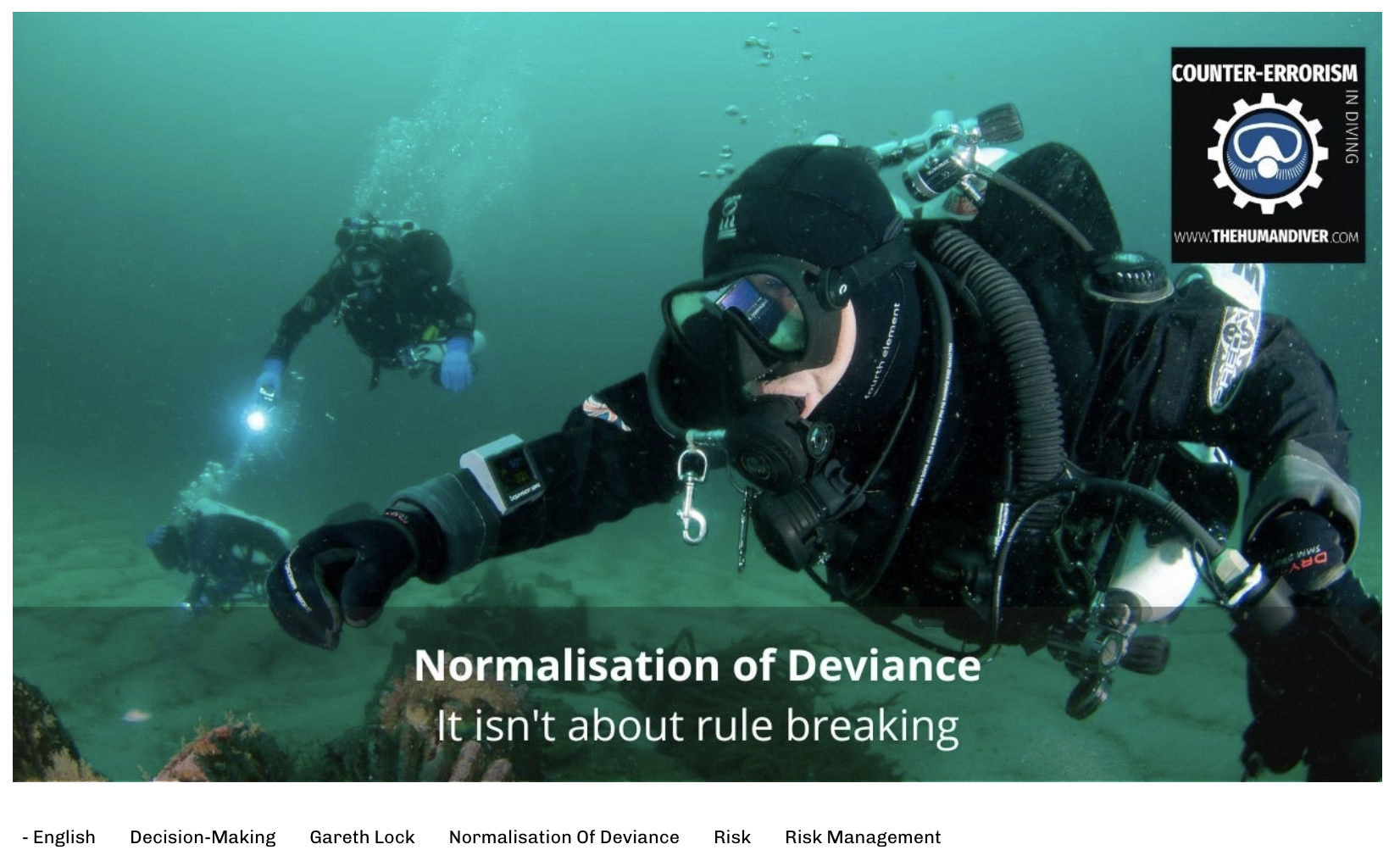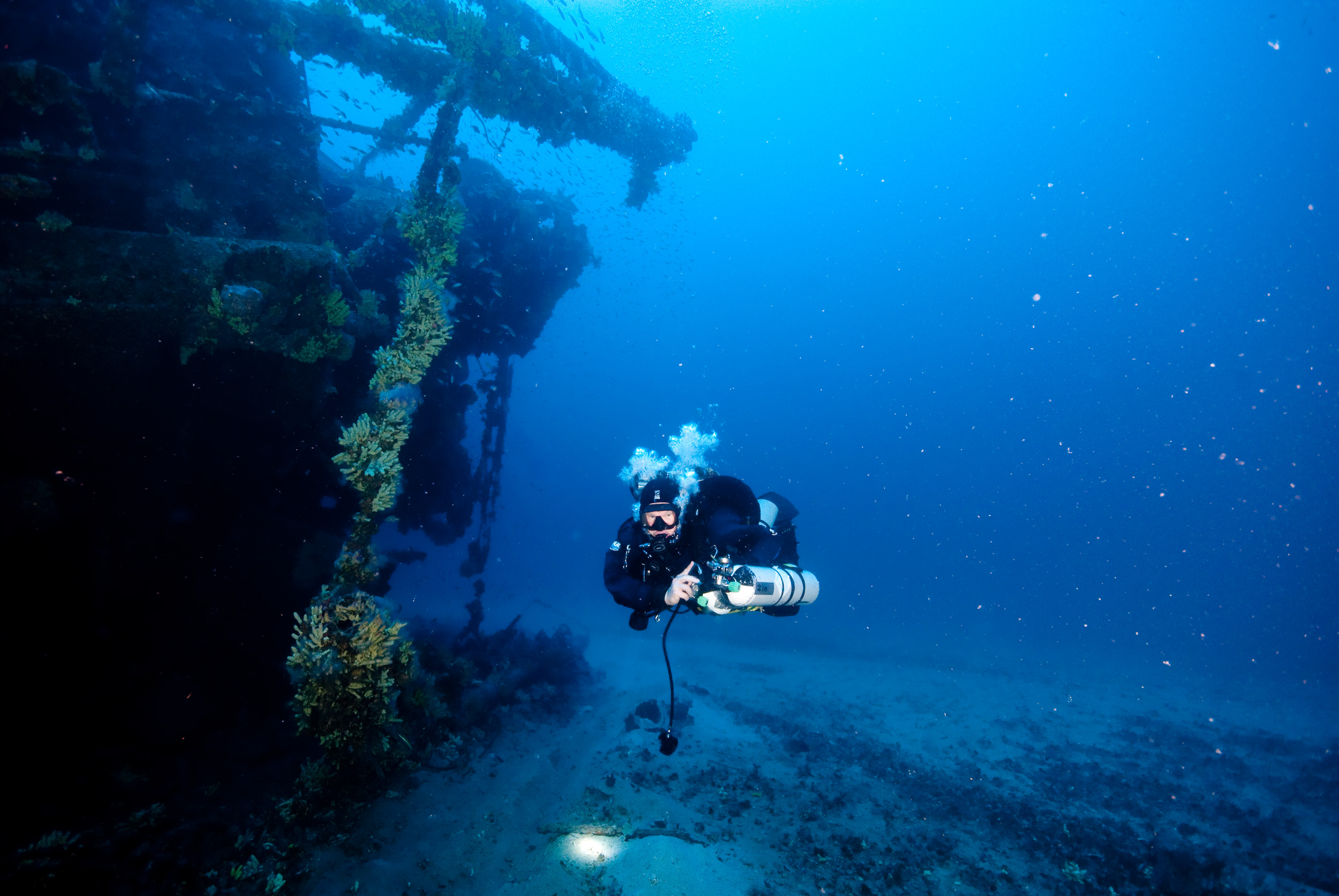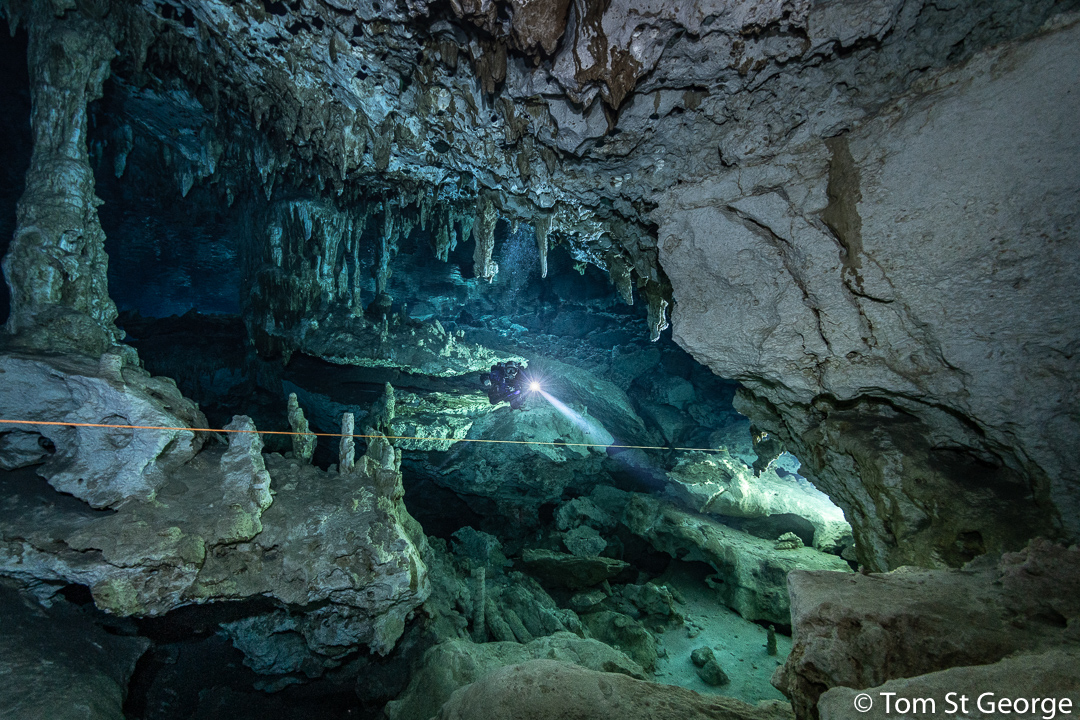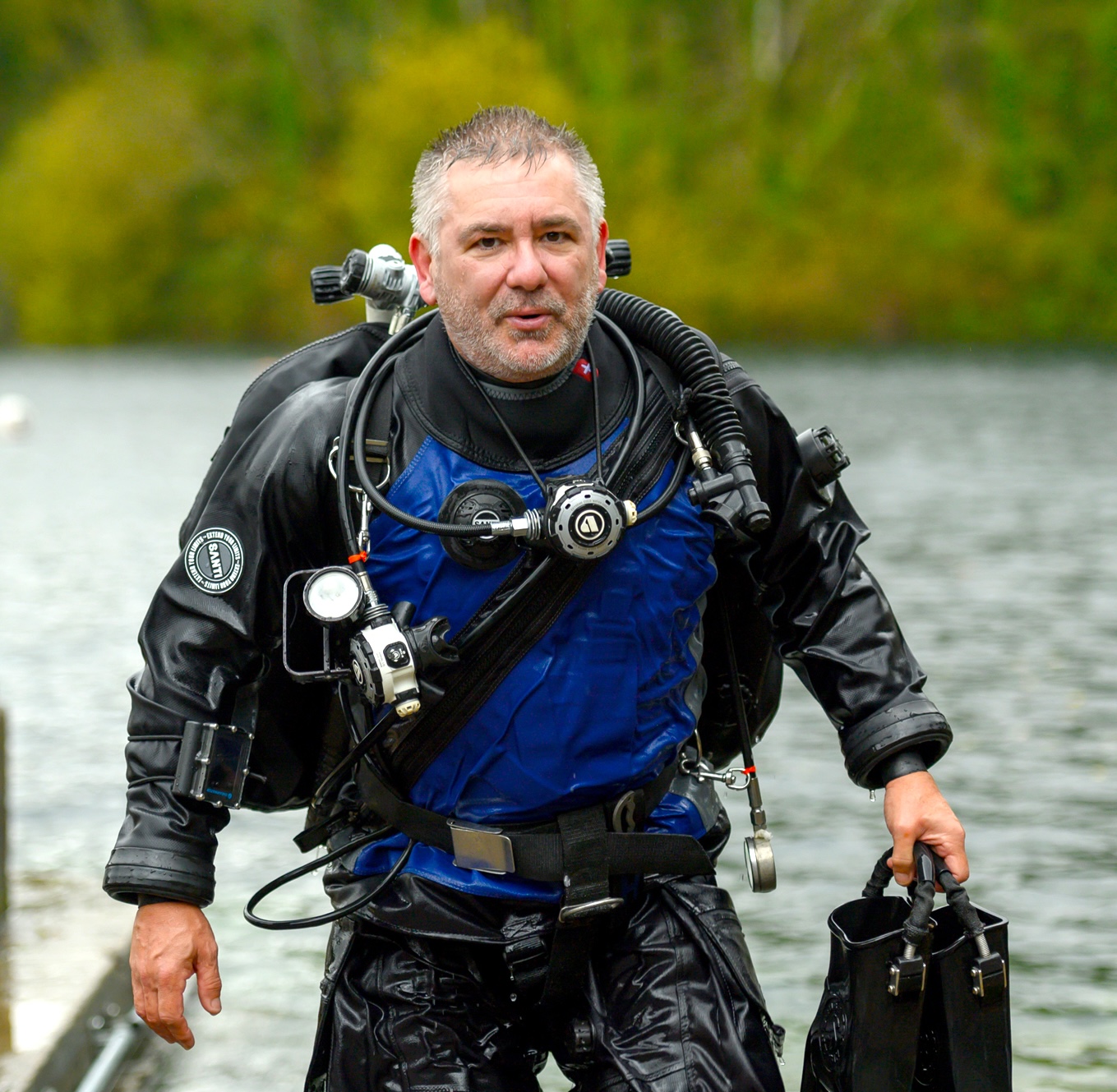
Top Tips for Technical/Cave Divers: Situation Awareness. Risk Perception is a critical skill - Experience Doesn’t Equal Judgement
Nov 11, 2025We often hear that 'experience is the best teacher.' In diving, much like in aviation, it’s common to equate years under the water, or the number of logged dives, with competence. We assume a diver with hundreds of dives is automatically more capable than someone fresh out of training. But what if that belief is flawed and misleading?
A fascinating study by Drinkwater and Molesworth explored this very idea in aviation. They wanted to know whether traditional markers of competence, like age, flight hours, or recent activity, actually predict better decision-making under uncertainty. Or, put another way: does experience really keep you safer by being able to notice the critical factors before it is too late and we are well down the slopes of the incident pit.
Their findings challenge what many of us might assume, and they carry powerful lessons for diving.

The Study: Decision-Making Under Pressure
The researchers placed 56 pilots in a simulated flight with a challenging decision: continue searching for a missing skydiver with just 18 minutes of fuel plus a mandated 5 mins of emergency fuel, or return safely to base. This wasn’t a genuine emergency, but rather a judgment call.
Roughly one-third said “No-Go,” choosing caution. Two-thirds said “Go,” accepting the added risk of low fuel in exchange for helping out.
Here’s the key insight: it wasn’t experience, age, or recent flying that predicted which group the pilots fell into. The only difference between the “Go” and “No-Go” groups was their perception of risk. The “No-Go” pilots rated high-risk scenarios as significantly more dangerous than the ones who pressed on.
Does this sound familiar?
Think about the underwater photographer who decides “just one more shot” on a wreck when they’re bumping close to gas turnaround. Or the instructor who slips outside standards because “it’s only for a moment, and I’ve done this hundreds of times.” Or the cave diver who does a blind jump because they ‘know’ they will remember the way out?
Fundamentally, it’s not how much time you’ve clocked. It’s how you see the risk.
Beyond Logging: The Real Predictor of Safer Diving
In diving, as in flying, risk perception is personal and contextual. Two divers can look at the same dive plan, and one might see a safe gap in the wreck or cave system, while the other sees a hazardous squeeze. The study reinforces that competence isn’t built simply on experience. It’s built on reflection, perception, and calibration.
That’s especially important in diving where context matters a lot. You might be cautious in caves but relaxed with rapid ascents. You might be rigorous about gas planning but laissez-faire about equipment checks.
As the paper notes: “Risk awareness and risk perception doesn’t necessarily transfer automatically across contexts, and it certainly doesn’t transfer across individuals.” This is echoed in the work by John Adams where he highlights individuals who are cautious in one space, like healthcare, but more adventurous outside, like white-water rafting.
This variability and dynamic nature of risk is why diving teams need open briefings, shared mental models, and a culture where asking “Is this still safe?” are normal, even if you’ve done the dive 50 times before.
The Paradox of Confidence
The study went deeper. Among those who chose to fly the search mission in the study, those with higher self-confidence tended to fly for less time, reducing their exposure, but older pilots tended to descend to lower and so more riskier altitudes during the search.
In diving terms, this suggests that experience can create a split effect:
- Strategic safety awareness may improve (e.g., knowing when to call the dive).
- Tactical risk awareness may erode (e.g., believing that entering a ‘dodgy wreck’ and not laying line is fine because “I’ve done worse”).
As divers gain experience, it’s easy to normalise risk. And it is socially accepted. Until it doesn’t, and then everyone points the finger for the rule-breaking. This social acceptance is the basic premise of normalisation of deviance explained here.
Experience Without Reflection Is Just Repetition
“You can’t reflect in the moment until you’ve reflected on the moment.” – Gareth Lock
The lessons for us are clear:
- Logging dives isn’t the same as learning from them.
- Debriefing past errors and close calls should be part of every diver’s practice.
- And just because something has worked 100 times before doesn’t mean it’s safe now.
The study’s authors argue that true competence is about continuously recalibrating your sense of risk. It’s not about flying, or diving, by pure checklist. It’s about having the presence of mind to ask: “Has the situation changed? Should I change with it?”
That’s what makes the difference underwater, just as in the air.
And one of the hardest parts about putting this into practice is the need for self-reflection and humility. It is too easy to look at other divers and say, “I wouldn’t do that because I am different.” and yet we are all wired broadly the same. We should look for similarities and not differences. If we look for differences, the learning opportunities are more easily lost.
Top Tips
1. Debrief the ‘No-Go’ Moments, Not Just the Dives
“We learn more from what we didn’t do than what we did.”
In the aviation study, the safest pilots were those who recognised “Immediate High Risk” situations and chose to turn back. In diving, the same applies, the dives we don’t do often reveal more about our judgement than the ones we complete.
Practical steps:
- Build a “No-Go Log” where you record the dives you cancelled or modified — and why.
- Reflect as a team: What cues triggered that decision? How did it feel to say no?
- Share those reflections publicly when possible; this helps normalise prudence as a skill, not weakness.
Why it matters:
You’re training your brain to spot and interpret contextual risk signals before they become familiar and invisible. This strengthens risk perception calibration — the same factor that separated “Go” from “No-Go” pilots.
2. Rehearse the Margins Before You Need Them
In the study, pilots who perceived risk more accurately were better at assessing where margins disappeared. Experienced cave and tech divers can simulate that reflection before entering the water.
Practical steps:
- Run “what if” drills that focus not on procedure but on recognition:
- What are three cues that tell me this dive is changing?
- At what point would I call it, and why?
During team planning, especially for more complicated dives, allocate one diver to act as a “Devil’s Advocate” — their role is to ask “What could make this unsafe? And how would we notice it." - this is part of the UNITED-C framework - test the plan.
In debriefs, discuss how you recognised the shift, not just what happened.
Why it matters:
You’re developing situational metacognition — the ability to notice when your thinking is narrowing. This increases sensitivity to “Immediate High Risk” shifts, even in familiar environments.
3. Challenge the ‘Experience Equals Safety’ Bias
The research showed that experienced pilots often normalised risk, descending lower and feeling safer doing so. In diving, experience can do the same: we feel comfortable because we’ve done it before, not because it’s safer now.
Practical steps:
- In training or mentoring, use “I’ve done this a hundred times” as a red flag for deeper questioning.
- Revisit old dives with fresh eyes: What risks were you blind to then?
- Encourage peer feedback, especially from less experienced divers — they may see what you’ve normalised.
Why it matters:
Experience without reflection breeds complacency. Reflection turns experience into judgement. Keeping risk perception sharp means deliberately re-questioning what feels routine.
4. Use Team Dialogue to Calibrate Risk Perception
Drinkwater & Molesworth found that perception is individual, but diving is a team activity. That means we can use our teammates’ perspectives to align our mental models.
Practical steps:
- In pre-dive briefs, ask each diver to rate the perceived risk of the dive from 1–10 and explain their rating.
- Discuss differences openly, not to reach consensus, but to expand awareness.
- During the dive, notice the unexpected changes and bring them to the fore during the debrief: “That silt kicked up faster than expected.” Small comments help the team collectively recalibrate.
Why it matters:
Teams that talk about perception share awareness. This reduces the gap between what is actually risky and what feels fine. Shared perception leads to better collective judgement — underwater and on the surface.

Final Thoughts
As divers, we need to challenge the myth that time underwater equals trustworthiness, or the number of certifications equals competence. Yes, the experience gives us tools. But without conscious reflection, challenge, and conversation, it just becomes habit. We can become very good at doing the wrong thing!
The paper makes one thing clear: perception drives judgement. Which means we need systems, teams, and training that fine-tune how we see the dive, not just how we do it.
That’s why the work that the Human Diver is so important. It moves the needle from determining ‘competence’ based on technical skills and the number of dives completed, towards about enhancing the way we think, speak, decide, and interact, especially when the margins get thin.
“You can’t reflect in the moment until you’ve reflected on the moment.”, Gareth Lock. It is the reflection that improves future outcomes, not the outcome of the last dive you did.
- You might have had a terrible dive, but you did everything that made sense at THAT time.
- You might have had a great outcome, but without reflection, how do you determine whether you were lucky or good?
By reflecting we find out how and why it made sense, and then you can be better than yesterday.
Reference: Drinkwater, J. L., & Molesworth, B. R. C. (2010). Pilot see, pilot do: Examining the predictors of pilots’ risk management behaviour. Safety Science, 48(10), 1445–1451. https://doi.org/10.1016/j.ssci.2010.07.001

Gareth Lock is the owner of The Human Diver. Along with 12 other instructors, Gareth helps divers and teams improve safety and performance by bringing human factors and just culture into daily practice, so they can be better than yesterday. Through award-winning online and classroom-based learning programmes, we transform how people learn from mistakes, and how they lead, follow and communicate while under pressure. We’ve trained more than 600 people face-to-face and 2500+ online across the globe, and started a movement that encourages curiosity and learning, not judgment and blame.
If you'd like to deepen your diving experience, consider the first step in developing your knowledge and awareness by signing up for free for the HFiD: Essentials class and see what the topic is about. If you're curious and want to get the weekly newsletter, you can sign up here and select 'Newsletter' from the options.
Want to learn more about this article or have questions? Contact us.









